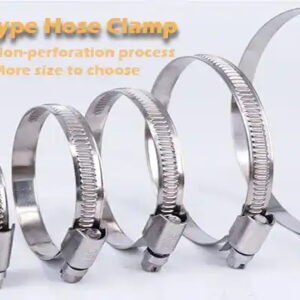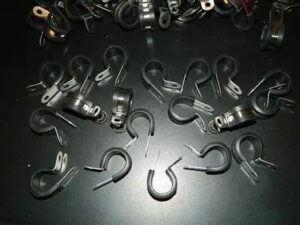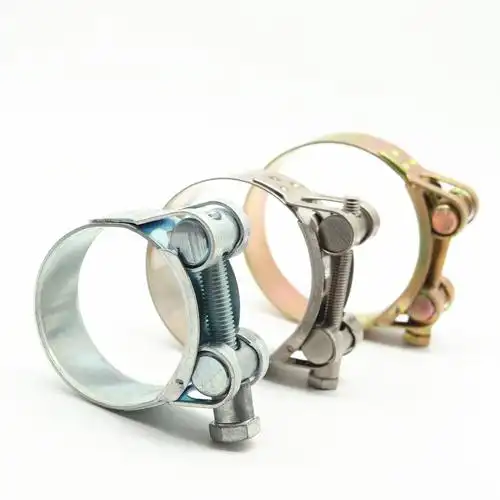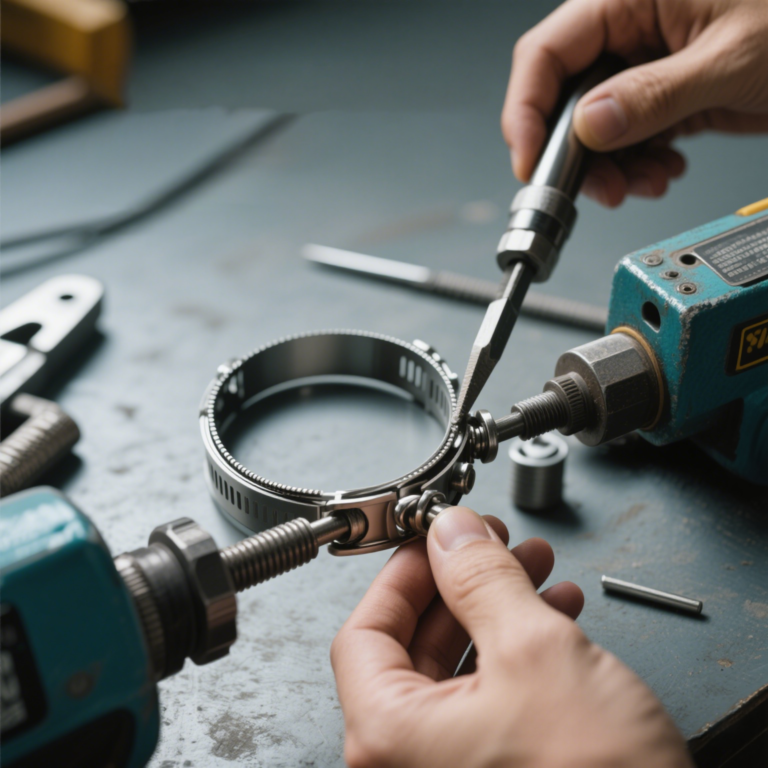Can you use hose clamps on pex
PEX tubing has become a popular choice for plumbing systems due to its flexibility, durability, and ease of installation. However,…
PEX tubing has become a popular choice for plumbing systems due to its flexibility, durability, and ease of installation. However, when it comes to securing PEX tubing, the question often arises: can you use hose clamps on PEX? This article will explore the compatibility, potential risks, and proper installation techniques for using hose clamps on PEX tubing.

Understanding PEX Tubing
PEX, which stands for cross-linked polyethylene, is a type of flexible plastic tubing used extensively in plumbing systems. It is known for its ability to expand and contract without cracking, making it ideal for cold climates. PEX tubing is also resistant to corrosion and is generally more cost-effective than traditional copper or PVC pipes. Its versatility allows it to be used in a wide range of applications, including residential, commercial, and industrial plumbing systems, as well as radiant heating and cooling systems.
Types of Hose Clamps
Hose clamps are mechanical devices used to secure hoses or tubing onto fittings to prevent leaks. There are several types of hose clamps, including:
1.Worm Gear Clamps: These clamps feature a screw that tightens around the hose when turned. They are easy to use and lower the possibility of damage to soft materials.
2.Spring Clamps: These clamps have spring-like arms that compress around the hose. They are commonly used in high-pressure applications.
3.Ear Clamps: Also known as Oetiker clamps, they have a single ear for securing the hose.
Compatibility of Hose Clamps and PEX Tubing
While it is technically possible to use hose clamps on PEX tubing, it is not the recommended method for securing the pipe. PEX tubing requires a secure and reliable connection, which is best achieved through specialized PEX fittings and clamps designed for this purpose. Using hose clamps may result in uneven pressure distribution, leading to distortions in the PEX tubing and compromising its integrity. Additionally, hose clamps are not specifically designed for PEX tubing, and their use may not comply with plumbing standards and codes.

Potential Risks and Issues
Using hose clamps on PEX tubing can lead to several potential risks and issues:
1.Leaks and Water Damage: If the clamp is not properly secured or if it punctures the tubing, it can result in a significant water leak. This can lead to damage to the surrounding area, including walls, flooring, and belongings. The financial and time implications of cleaning up after water damage can be substantial.
2.Limited Warranty Coverage: Many PEX tubing manufacturers provide limited warranties for their products. However, if hose clamps are used in a manner not recommended by the manufacturer, it can void the warranty. This means that any damage or issues related to the tubing may not be covered, leaving homeowners responsible for costly repairs.
Alternative Solutions
When it comes to securing PEX tubing, there are more suitable options than hose clamps:
1.PEX Crimp Rings: These are popular in PEX installations and provide secure connections without leaks. They are durable and offer a robust seal.
2.PEX Cinch Clamps: These are easy to install and remove, making them a versatile choice for PEX tubing connections. They ensure a tight and reliable seal.

Proper Installation Techniques
If you decide to use hose clamps on PEX tubing, it is crucial to follow proper installation techniques to ensure a durable and leak-free connection:
1.Gather the Necessary Materials: Ensure you have all the required materials handy, including PEX tubing, hose clamps, a PEX cutter or hacksaw, a PEX crimping tool, and a measuring tape.
2.Prepare the PEX Tubing: Measure and cut the PEX tubing to the desired length using a PEX cutter or hacksaw. Ensure that the cut is clean and free from burrs or any damage that may affect the integrity of the connection.
3.Slide the Hose Clamp onto the Tubing: Take the hose clamp and slide it onto the end of the PEX tubing. Ensure that the clamp is positioned close to the edge, leaving enough room for the crimping process.
4.Insert the PEX Fitting: Insert the PEX fitting into the end of the tubing, making sure it fits securely. The fitting should be pushed in until it reaches the shoulder of the PEX fitting tool.
5.Crimp the PEX Fitting: Using a PEX crimping tool, crimp the hose clamp onto the tubing and the PEX fitting. Apply steady pressure until the clamp is securely fastened to create a watertight seal.
In summary, while it is possible to use hose clamps on PEX tubing, it is not the recommended method due to the potential risks and issues associated with their use. Specialized PEX fittings and clamps are designed to provide a secure and reliable connection, ensuring the longevity and integrity of the plumbing system. If you choose to use hose clamps, ensure proper installation techniques are followed to minimize the risk of leaks and damage. Regular inspection and maintenance are key to preventing any potential issues and ensuring the safe and effective operation of your plumbing system.

Problem: There are concerns and potential issues when considering using hose clamps on PEX (cross – linked polyethylene) tubing.
Problems Encountered:
1.Inadequate Sealing: Hose clamps may not provide a consistent and reliable seal on PEX tubing. PEX has a smooth surface, and hose clamps might not be able to compress the connection fittings tightly enough to prevent leaks, especially in systems with fluctuating water pressures. For example, in a hot water heating system where the water pressure can vary due to temperature changes, a poor seal from a hose clamp could lead to water seepage over time.
2.Damage to PEX: Hose clamps, if tightened too aggressively in an attempt to achieve a seal, can damage the PEX tubing. The sharp edges of the hose clamp can indent or even cut into the PEX material, weakening the tubing and potentially causing long – term integrity issues. This is a significant risk as it can lead to sudden failures in the plumbing system.
3.Compatibility Issues: Standard hose clamps are not specifically designed for PEX tubing. They are typically made for use with rubber hoses and other applications, and their design may not be optimized for the unique properties of PEX. This lack of compatibility can result in improper fit and performance.
Solutions:
1.Use PEX – Specific Fittings and Clamps: Instead of hose clamps, there are fittings and clamps that are specifically designed for PEX tubing. For example, PEX crimp rings or PEX expansion fittings. PEX crimp rings are made of copper or stainless – steel and are crimped onto the PEX tubing using a special tool. They create a secure and reliable seal. Expansion fittings use a rubber O – ring and a locking ring to expand and grip the PEX tubing, providing a tight connection. These fittings are engineered to work with the flexibility and dimensions of PEX tubing, reducing the risk of leaks and damage.
2.Proper Installation Training: Ensure that anyone installing PEX tubing is properly trained in the correct installation methods. This includes learning how to measure, cut, and connect PEX tubing using the appropriate fittings. For instance, when using PEX crimp rings, the installer needs to know the correct sizing of the ring for the tubing diameter and how to use the crimping tool accurately to achieve the proper compression.
3.Regular Inspection: Implement a regular inspection schedule for PEX plumbing systems. This can help detect any early signs of problems such as minor leaks or signs of wear on the connections. If an issue is caught early, it can be addressed before it leads to more significant damage. For example, during an inspection, if a connection with a hose clamp shows signs of seepage, it can be replaced with a proper PEX fitting immediately.







